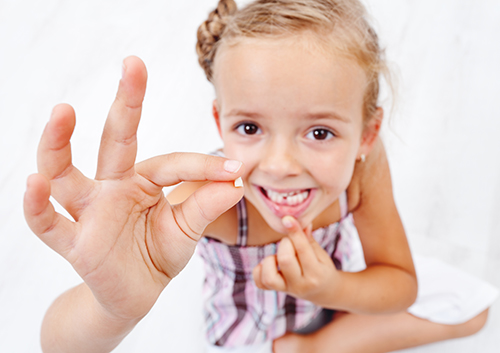July 26th, 2023

While Dr. Collins and our team tell you daily oral hygiene habits, such as brushing and flossing, are essential to optimal oral health, regular dental checkups at Gentle Dental Care ensure your teeth are treated to a deeper level of cleaning.
We recommend for most of our patients to have a cleaning at our Mundelein office at least every six months. In addition to a thorough cleaning and polishing of your teeth, visits with Dr. Collins help us detect and prevent the onset of tooth decay and gum disease, also known as periodontal disease. During your visit, we will check the health of your mouth, teeth, gums, cheeks, and tongue for signs of any decay or disease. We will also check old fillings and restorations as these can wear away over time due to chewing, clenching, or grinding.
If you are predisposed to any oral diseases, Dr. Collins may recommend checking in with us more often than every six months. We want your teeth to get the professional attention they deserve! If you are overdue for your next cleaning, give us a call at our Mundelein office to schedule a checkup! See you soon!
July 19th, 2023

It seems today’s technology has made every moment a camera-ready opportunity. (Just check your friends and their latest selfies.) What you may not expect is the opportunity to see a close-up of your teeth and gums in vivid detail the next time you’re in our office. But with intraoral cameras, Dr. Collins can use the most up-to-date tools to provide your most accurate diagnosis—and let you see for yourself exactly what we’re seeing.
Intraoral cameras were developed in the 1980s. This camera makes use of a sleek wand-style design to fit easily into your mouth. Using a camera lens and its own lighting, the camera is able to show hard-to-reach places in the mouth much more clearly and easily than can be seen using dental mirrors alone. Images are projected onto a monitor or screen, where both dentist and patient can get a detailed view, and images can be enlarged, if needed, to provide better definition.
What can an intraoral camera reveal? While X-rays are invaluable for discovering treatable conditions such as cavities, infections and bone diseases, there are some conditions that are not easily apparent using X-rays alone. Small cracks in a tooth, developing cavities near crowns or older fillings, fractures, early gum disease, even areas where plaque has been missed during brushing are visible in clear detail using the intraoral camera.
How does this improve your dental care?
- We always want to use the least invasive procedure we can, and keep as much of your healthy tooth as possible. Finding small problems early prevents them from becoming large problems later.
- If you are consistently failing to brush certain teeth, or if some areas of your gums show signs of neglect, we can show you directly what places you’ve been missing so you can adjust your brushing and flossing habits.
- We can take photos if needed for your files so we have a detailed visual record of your dental status at any point in time.
- Finally, you will be able to see for yourself the reasons we might suggest certain treatments, and be better informed about your own dental health.
We’re happy to offer the intraoral camera at our Mundelein office as one of the tools we use to provide you with the most precise and thorough care possible. Ready for your close-up?
July 19th, 2023

If you have been bringing your baby in for regular checkups since that first tooth arrived, you might expect that he or she is already familiar with Dr. Collins and our staff. Often, though, months pass between visits, which is a very long time for a child. How can you make your preschooler’s return visit a happy one? We have some suggestions!
Before Your Visit
- Prepare your child for her visit. Simple explanations are best for a young child. You might tell your daughter that a dentist is a doctor who helps keep her teeth strong and healthy. Let her know a bit about what will happen. Being told, “You will sit in a special chair,” or, “Can you open wide so we can count your teeth?” will give her some idea of what it’s like to visit our office.
- There are many entertaining books for young children about visiting the dentist. Reading some of these to her for a few days before the appointment will let her know what to expect.
- Use playtime to prepare. You might count your daughter’s teeth or let her “play dentist” and brush the teeth of her favorite doll or stuffed animal.
When You Arrive
- Your attitude can be contagious! If you treat a visit to the dentist like any other outing, chances are your child will too. Your calm presence is exactly what your child needs.
- You might want to come a bit early to let your son explore the office. Bring a favorite toy or book to keep him entertained if you need to. A favorite stuffed toy can be a comfort in an unfamiliar place.
- If you are with your child during his checkup, follow our lead. Don’t be concerned if your child seems uncooperative at first or even throws a tantrum—we are used to working with children, and have techniques to make his experience as relaxed and as positive as we possibly can.
We Are Here to Help
We are your partners in your child’s dental care. Call our Mundelein office anytime for suggestions about making your child’s visit a comfortable, comforting experience. Our goal is to start your child confidently on the road to a lifetime of empowering dental visits and lasting dental health.
July 12th, 2023

While the last baby teeth generally aren’t lost until age ten or 11, most children stop believing in the tooth fairy by the time they're seven or eight. Of course, children are more than happy to play along with the game when there’s money at stake! While it is impossible to know what the tooth fairy does with all those teeth (are they labeled and stored like museum pieces in a giant fairytale castle?), it is possible to trace the history and myth of the tooth fairy to several cultures and traditions. Dr. Collins and our team learned about some interesting myths about the tooth fairy!
The Middle Ages
Legend has it that Europeans in the Middle Ages believed a witch could curse someone by using their teeth, so it was important to dispose of baby teeth correctly. Teeth were swallowed, buried, or burned. Sometimes baby teeth were even left for rodents to eat. Despite being pests, rodents were valued for their strong teeth; it was generally believed a tooth fed to a rodent would lead to the development of a healthy and strong adult tooth.
Eighteenth Century France
The tooth fairy myth began to show more characteristics of a conventional fairytale in 18th century France. La Bonne Petite Souris, a bedtime story, tells the strange tale of a fairy that changes into a mouse to help a good queen defeat an evil king. The mouse secretly hides under the evil king’s pillow and defeats him by knocking out his teeth.
Scandinavian Lore
So, why does the tooth fairy leave money under the pillow? The idea of exchanging a tooth for coins originated in Scandinavia. Vikings paid children for a lost tooth. Teeth were worn on necklaces as good luck charms in battle. While the idea of exchanging a tooth for coins quickly spread throughout the rest of Europe, a fierce, horn-helmeted Viking is far cry from the image of a fairy collecting teeth.
While the tooth fairy as children know her today didn’t make an appearance until the 1900s, tooth myths and rites of passage have existed in numerous cultures since the dawn of time.



